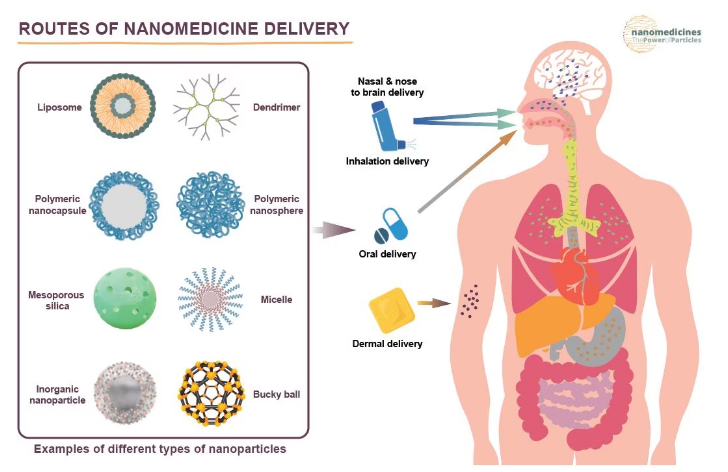Living in a senior assisted living facility can be an amazing experience for seniors and their families. Not only does it provide security and comfort, but it also offers the opportunity to make new friends and take part in social activities. Socializing is one of the most important aspects of life at an assisted living center, as it helps keep residents engaged and connected with each other. In this article, we’ll explore how socializing plays an integral role in making assisted living centers a wonderful place to live.
For many seniors, leaving home can be difficult – especially if they’re used to being surrounded by family or close friends. But thanks to the wide range of social activities available at assisted living centers, there’s no need to worry about feeling isolated or lonely. From movie nights to potluck dinners, there are plenty of ways for people to engage with others in the community. What’s more, these events often foster strong relationships between residents that last long after the event has ended!
Finally, socializing isn’t just about having fun – it’s also great for our mental health and wellbeing too. Studies have shown that regular interaction with peers reduces depression levels and anxiety among elderly populations while increasing overall happiness levels. So not only do residents get to enjoy themselves when attending these events, but they can also reap some physical benefits too!
Definition
Socializing in assisted living is an important part of life that can provide many benefits for seniors. But what exactly is assisted living and why is it beneficial? This section will define the term ‘assisted living’ to help you better understand its meaning and importance.
Assisted living refers to a type of residential care specifically designed for elderly individuals who need some level of support with daily activities such as personal care, mobility, medication management, or meal preparation. Assisted living facilities typically offer private apartments equipped with basic amenities, along with access to medical professionals if needed. It’s an ideal solution for those seeking more independence than traditional nursing homes while still receiving assistance when necessary.
Understanding the definition of assisted living can give us insight into how socialization fits into this lifestyle. By knowing what services are available in these settings, we can better appreciate the value of socializing among residents and staff alike, which helps create meaningful relationships and overall happiness within the community. With this newfound knowledge, let’s explore further by looking at the benefits of socializing in assisted living.
Benefits Of Socializing In Assisted Living
Socializing in assisted living environments is incredibly beneficial for residents and staff. Socializing helps build meaningful connections that can last a lifetime, and it also encourages individuals to stay active and engaged in their everyday life. Here are just some of the benefits of socializing in an assisted living environment:
* Improved mental health: Social activities help reduce loneliness, depression, and anxiety, as well as promote better physical and emotional wellbeing. Residents who engage in regular social activities report feeling happier overall.
* Sense of purpose & belonging: Participating in social activities gives people a sense of purpose while helping them feel more connected with others around them. This connection can lead to forming lasting relationships in the community which can result in increased feelings of safety, security, and happiness.
* Enhanced cognitive functioning: Studies have shown that engaging regularly in stimulating conversations and activities helps keep minds sharp by increasing concentration levels, memory recall skills, critical thinking abilities, and problem-solving capabilities.
Engaging socially is essential for any age group; however seniors may need extra assistance due to mobility issues or other limitations associated with aging. Assisted living communities provide the perfect setting for residents to connect with one another while having access to resources such as transportation, meals, housekeeping services, etc., making it easy for them to participate without difficulty or stress.
By providing opportunities for positive interactions with peers and professional staff members alike, assisted living facilities create bonds built on trust that will prove invaluable over time. Through these connections residents make friends from all walks of life developing lifelong relationships which enrich their lives beyond measure. Next up we’ll discuss various types of activities available at assisted living centers designed specifically to encourage socialization among its inhabitants.
Types Of Activities
People living in assisted living facilities have many opportunities to engage in activities that are both entertaining and beneficial. Whether they’re looking for activity ideas, social activities, virtual activities or outdoor activities, there is something of interest available.
Game nights offer a great opportunity to socialize with other residents while playing various board games such as checkers, chess, Monopoly or card games like bridge. Residents can also join a game of Bingo or even charades which is an excellent way to improve their communication skills. Other popular group activities include movie nights, trivia contests and karaoke.
For those who prefer more creative outlets, art classes provide the perfect outlet for self-expression. Painting and drawing classes help develop artistic abilities while providing an opportunity for community building among fellow students. Music lessons allow residents to express themselves through instruments such as piano and guitar while learning about music theory from experienced instructors. Additionally, gardening clubs provide physical exercise along with mental stimulation by helping members learn how to cultivate healthy plants in a safe environment.
Each type of activity offers unique benefits no matter what interests the resident has – enhancing quality of life through meaningful connections and experiences. With so many options to choose from, it’s easy to find one that perfectly fits each individual’s needs!
Social Clubs & Groups
Assisted living communities are home to a wide variety of social clubs and groups for residents to join. These clubs can offer great opportunities for seniors to connect with others who share similar interests, build relationships, and enjoy activities together in an engaging setting.
Social club activities can range from book clubs and movie nights to playing cards or taking part in weekly outings like shopping trips or visiting local attractions. No matter what type of activity you participate in, making connections at assisted living gatherings is key for helping seniors feel more connected and engaged within the community.
Whether it’s joining a formal club or simply connecting over a game of chess, there are many ways for seniors to get involved and make friends at assisted living facilities. From art classes and gardening projects to special events hosted by the facility itself, there are countless chances for assisted living socializing that can naturally lead to meaningful friendships among residents.
By discovering all the different options available at any given facility, seniors have plenty of opportunity to find their place within their new environment while also getting out and enjoying life with other members of the community.
Tips For Making Connections In Assisted Living Communities
Making connections is an important part of living in an assisted living community. It’s a great way to make friends and enjoy the social benefits of senior living. But how do you go about making these connections? Here are some tips for connecting with others in your assisted living community:
First, get involved in community activities. Look into what kind of events or programs your assisted living community offers and participate when you can. This is a great way to meet other people who live there. You may find yourself forging friendships quickly!
Second, don’t be afraid to reach out first. If you see someone that looks like they could use a friend, introduce yourself and strike up a conversation. Ask them questions about themselves and show genuine interest in getting to know them better. Sharing stories from past experiences is usually enough to start forming bonds.
Third, offer help whenever possible. Whether it’s helping another resident carry groceries or offering assistance with tasks around their room – lending a hand goes a long way towards building relationships within the community. Doing small things for one another will foster goodwill between all residents, creating strong bonds over time.
These tips can be used as stepping stones for starting meaningful conversations and lasting friendships at your senior living facility. From here we move on to exploring technologies for connecting with others…
Technologies For Connecting With Others
Technology has revolutionized how people in assisted living facilities socialize. With the right technology, they can stay connected with friends and family from all over the world. Socializing technologies have made it easier than ever for residents to keep up with their loved ones no matter where they are located.
Video chat platforms such as Skype and FaceTime are incredibly useful for connecting elderly folks with far-flung relatives. Residents of assisted living can also use these services to take virtual tours of places around the globe or even just down the road. They can join online support groups that provide comfort and camaraderie among like-minded individuals who understand each other’s struggles. Additionally, there is an increasing number of apps geared toward seniors that allow them to manage their medications, communicate with healthcare providers, and find activities tailored specifically to their needs and interests.
Assisted living technology provides a wealth of opportunities for elders to stay engaged socially while aging in place. By taking advantage of these tools, seniors can enjoy more meaningful connections with those near and far without having to leave home. Through virtual technology, older adults remain active members of their community despite physical limitations or geographic boundaries.
The possibilities are endless when incorporating modern communication tools into daily life at assisted living communities. From exchanging photos to attending lectures on foreign cultures, there’s something new waiting around every corner – no matter what age you may be! As we move forward into this exciting era of elderly technology, let’s continue embracing its potential for enriching our lives and deepening our relationships. Moving on then…what potential challenges exist when it comes to socializing in assisted living?
Potential Challenges With Socializing In Assisted Living
Although technologies can help to connect residents of assisted living communities, there may be challenges with socializing in these environments. This is especially true for elderly individuals who may struggle with age-related issues that limit their ability to interact socially. These difficulties can lead to loneliness and isolation, making it more difficult for them to take full advantage of the opportunities available at an assisted living community.
One issue that many elderly individuals face is mobility-related impairment. Mobility problems can make it hard for people to move around freely within the facility, limiting their ability to access different areas where they could meet other residents or join activities. Even if a resident has access to transportation services, this might not be enough to overcome physical impairments and feelings of insecurity when travelling alone. Other factors such as hearing loss and visual impairments can also hinder communication between seniors and reduce their capacity to participate in activities outside the home.
Another challenge revolves around mental health concerns common among the elderly population, including depression, anxiety and cognitive decline. Mental health struggles can have a direct effect on one’s willingness or capacity to engage in social situations or even leave one’s apartment. It takes time for new residents of assisted living facilities to adjust and settle into their surroundings; persons who are feeling overwhelmed by grief or distress due to aging may need extra support during this transition period before they feel comfortable enough to explore all the community offers.
Assisted living communities must therefore create welcoming environments that encourage socialization among its residents while recognizing potential limitations related to aging. They should provide resources that cater specifically towards the needs of each individual so they can enjoy meaningful relationships despite any hardships associated with advancing age.
Conclusion
Socializing in assisted living can be a wonderful way to stay connected and engaged with others. It provides an opportunity for seniors to find meaningful activities that bring joy, laughter, and companionship into their lives. With the right attitude and a few tips, socializing in assisted living communities can become one of life’s greatest rewards.
It doesn’t have to be difficult or stressful; just take it slow and get involved at your own pace. Join local clubs and groups that offer activities you enjoy, attend special events put on by the community, use technology to connect with friends near or far, and don’t forget about those around you who are looking for someone to talk to – you never know what kind of friendship may blossom!
At the end of the day, remember that socializing is all about having fun. Whether it’s participating in group games like bingo or cards, getting out for some fresh air during walks around the neighborhood, or simply stopping by a neighbor’s room for coffee and conversation – these moments make up our memories that will last a lifetime.






